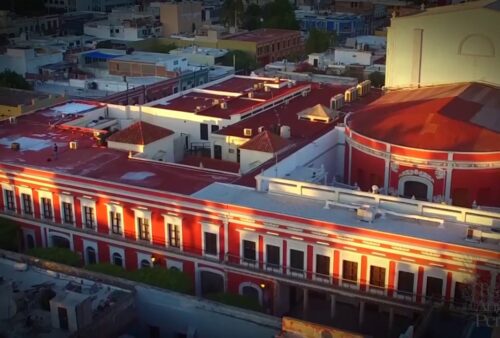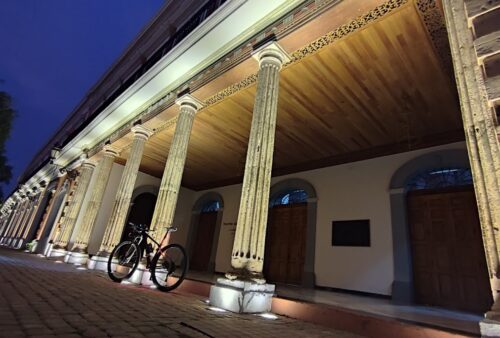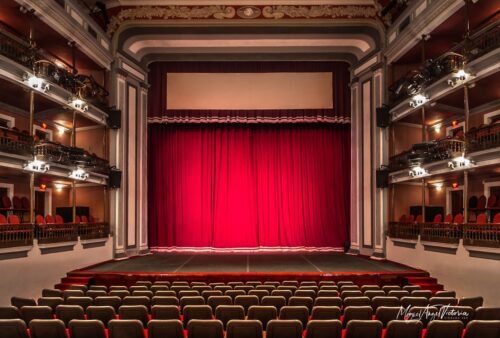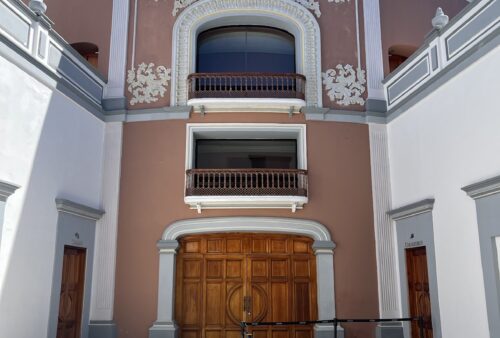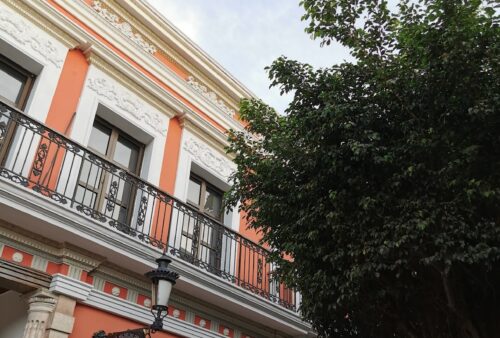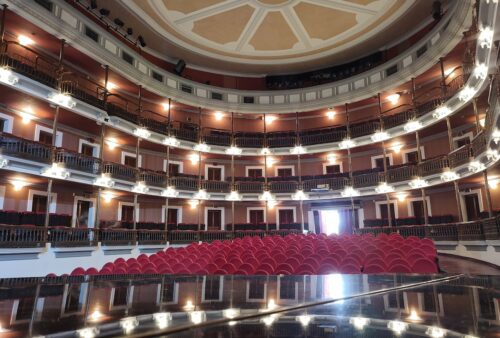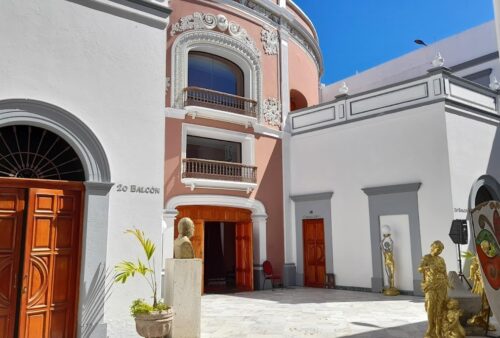Ángela Peralta Theater
The first stone was laid in 1869, and the last one in 1992. In October of that year, the new Teatro Ángela Peralta was inaugurated with a production of Bizet's opera Carmen. It was performed by the Fine Arts company with guest artists, except for the children's choir, which was local, and the conductor, who was Mazatlan's own maestro, Enrique Patrón de Rueda. This was the second reconstruction and the third inauguration of the building because that's how it is in the tropics; it competes with theaters that try to steal the show from its skies, cyclones, and jungles of its own spectacular nature.
The building has witnessed the different eras that the port has gone through, highlighting the Mexican Revolution.
It was first inaugurated in 1874, named Teatro Rubio in honor of its original owner, Don Manuel Rubio, albeit of modest proportions. It wasn't until between the years 1878 and 1880 when the project was improved and reinaugurated "as the most comfortable and elegant hall in the port, with its 15 sets of decorations painted expressly in Paris."
A grand romantic park and a perspective of aristocratic lounges were a must, suitable for both La Traviata and Lucia di Lammermoor. That's how theatrical sets were before the era of cinema. However, the 15 sets painted in Paris for this Mazatlán theater must now be imagined since they are nothing more than a curious statistic of its history. It must have still smelled new in 1883 when a ship from San Francisco arrived with Ángela Peralta's company on board. The "Mexican Nightingale," as her adorers called her, had scheduled "Lucia" as the premiere in Mazatlán, but the diva, who was already ill, died without singing a single note in the theater that now bears her name.
The theater has gone through various uses such as theater, cinema, and even a boxing ring.
In 1975, Hurricane Olivia, the most violent one that Mazatlán had endured, delivered the final blow to the building. It lifted the wooden roof with such fury that it crashed it into the interior of the theater, breaking its cast-iron balcony and shattering the wooden structure of the stage. It stayed exposed to the elements for ten years, enough time for the ficus jungle where Mazatlán is rooted to reclaim that piece of land. A gigantic amate tree took over the stage and grew so much and so quickly that the walls and balconies of the theater looked like those of a dollhouse. Another ficus with dreams of a hanging garden emerged from the third balcony. In short, in a short time, the vegetation covered the auditorium, and the roof structures looked more like a plane that had crashed in the jungle than the ruins of a theater. That's how the theater was, a ruin in the jungle, when its rescue began in 1986. Mazatlán's mayor, José Ángel Pescador, and his wife managed to interest the newly appointed governor, Francisco Labastida Ochoa, and his wife, Dr. María Teresa Uriarte, director of Cultural Diffusion of the State, and from that moment on, the project ceased to be a pipe dream for the people of the port and gradually became the current reality.
The first cultural festival held in this theater took place outdoors at the foot of the giant ficus. A rustic stage was built to accommodate a piano, a pianist, and soprano Gilda Cruz Romo. While she sang a recital of Mexican romantic songs - "Ileder tropical" - a full moon emerged from behind the ruined wall and climbed like a silver dove through the branches of the giant ficus until, at the end of the recital, it emerged into the clear starry sky, filling the entire theater with its glow. On that occasion, Gilda sang beautifully, the moon overacted. Four more festivals were held like this in the open air, two more indoors, and only the last one under Francisco Labastida's regime took place with a crimson ceiling and, thank goodness for modernity, air conditioning.
The final result far exceeded the original project. It was limited to rescuing the building itself as the main architectural monument of Mazatlán, a magnificent nineteenth-century relic with a neoclassical facade and baroque interior. However, under the direction of architect Juan León Loya, not only was the original structure faithfully restored, but a modern theater was also built within that shell, with all the advantages of acoustics, optics, lighting, and electronic control of theatrical technology. To achieve this, the inclination of the lunette floor was increased, the level of the stage was lowered, and a pit for an 80-piece orchestra was dug. And so, the second reconstruction was completed, 123 years and 15 million new pesos after Manuel Rubio laid the first stone of that theater that the people of Mazatlán were finally able to inaugurate for the third time in October 1992.
¿Sabías que?
El Teatro Ángela Peralta fué erigido en la era Porfiriana y fué declarado Patrimonio Histórico de la Nación en 1990.
Did you know?
The theater is named in honor of the soprano Ángela Peralta, known as 'The Mexican Nightingale,' who died in Mazatlán in 1883. She was part of an opera company that was set to perform at the venue, but the diva couldn't sing due to a case of yellow fever, which eventually led to her death.
📍 Location
Carnaval street w/o No, Downtown, 82000 Mazatlán, Sinaloa.


